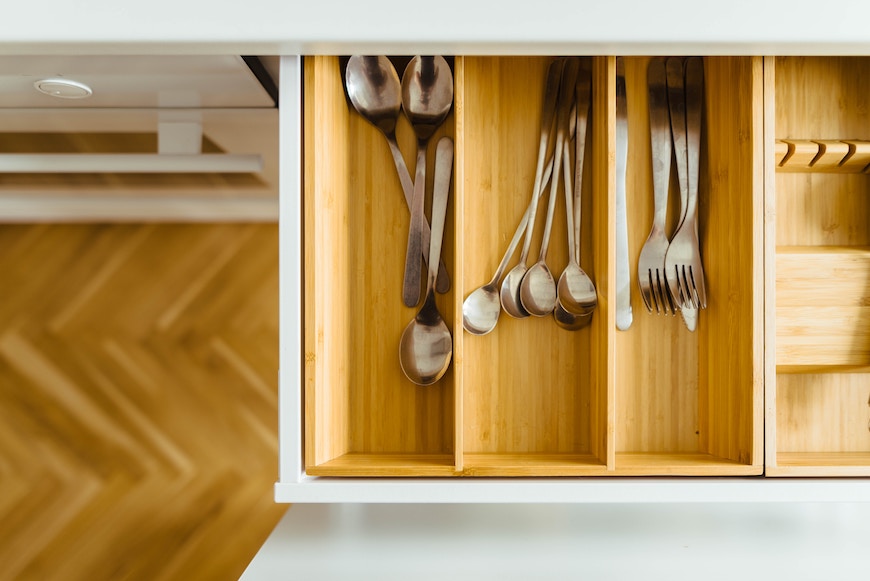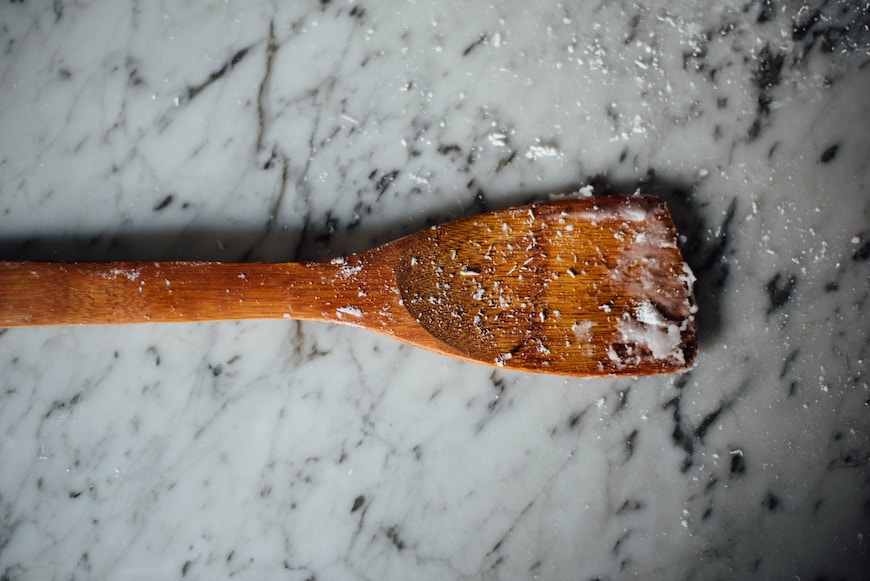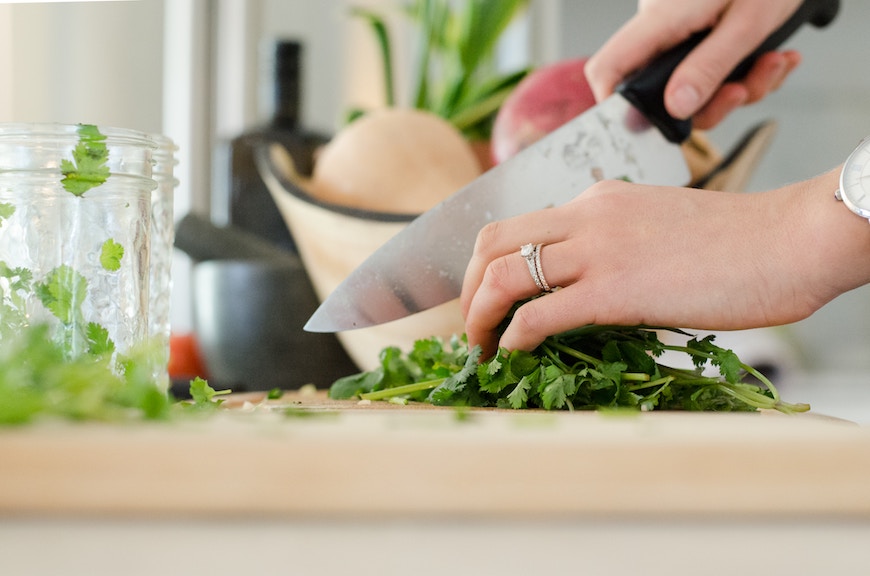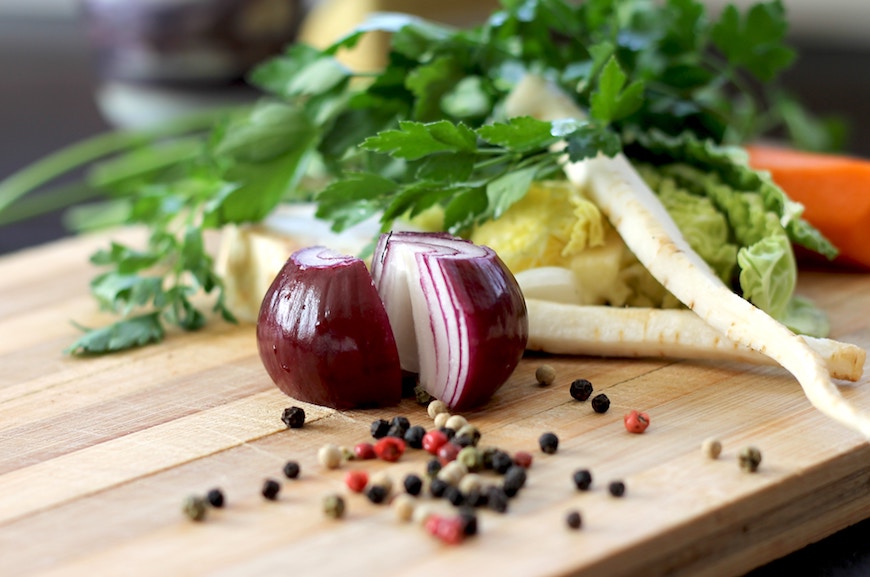This Is How Often You Should Be Getting Rid of Every Product in Your Kitchen
Spring cleaning is upon us, and while you've probably been dreading looking forward to finally donating half of the sweater pile that's been torturing you all winter, there's another nook of your house begging for a clean-out that you probably haven't thought about: Your kitchen.
"Kitchenware isn’t like clothing, but it is like quality denim: It should get broken in, not worn out after a season,” says Material co-founder Eunice Byun. "So, when you decide you’re ready for an upgrade, seek out materials that last. High-quality stainless steel, cast iron and dense hardwoods are some of our favorites for withstanding decades of daily use." But that nylon slotted spoon your ex left behind years ago? Thank it for you service and toss it out, she says.
Since there isn't a one-size-fits-all solution to when to toss things, I reached out to Leanne Stapf, Vice President of Operations at The Cleaning Authority and Byun to get their advice. Here's what to know.
Keep scrolling for a breakdown of how you know when it's time to toss each kitchen product.

Dishes, mugs, and glasses
Great news: Those amazing dishes you bought when you moved into your first grown up apartment (and that Georgetown mug you bought the first day of college) can last a lifetime. Invest in a solid quality dishes (look for chip resistant ones), and they’ll be with you forever. When you load a dishwasher, make sure you leave enough space between the plates so they won’t crack, and place bowls, mugs, and glasses on the top rack with the open edge facing the back.

{{post.sponsorText}}
Silverware
Like dishes, silverware will also stick with you for the long haul as long as you give them proper TLC. Don’t let them soak too long in the sink, and make sure to use warm soap and water when you rinse. If you wash in the dishwasher, load your forks and knives with the handle down and separate the knives to prevent scratching. Polishing every once in a while helps, too, especially if you start to notice any grimy buildup or wonky discoloration.
Tupperware
Not only will old plastic tupperware eventually start to develop its own brand of "leftover stink” over time, but holding onto it for too long can actually create a bigger health issue. "If plastic, it’s important to keep track of how long you’ve had the tupperware, as chemicals can migrate out of the plastic when heating up,” says Stapf. "If the tupperware is cracked, discolored or deformed, it’s time to throw it out.” She suggests sticking with glass storage containers, instead, which last much longer and are safer and more eco-friendly.

Cooking utensils
Listen to what your spoons and spatulas are trying to tell you. "If your wooden spoon has developed deep cracks, or the top of your spatula keeps detaching, those deep fissures can harbor bacteria that your soap and sponge can’t reach," Byun says. "This could potentially put you at risk for foodborne illness, or at the very least nasty smells from oils that settle in and go rancid."
Pots and pans
One or two years of cooking love, and it’s time to say goodbye to your pots and pans. "It’s always a tell-tale sign that you need to replace your pans when they are no longer nonstick or if there is visible wear to the surface,” says Stapf. To make them last longer, put a liner in between them before stacking them in storage, don’t put them in the dishwasher, and never wash them while they’re still hot.
Coffee maker
Even just the thought of waking up one morning to find a broken coffee maker is enough to send chills down any caffeine-addict’s spine, so it’s important to take care of it on the reg to help extend its lifespan. Most quality coffee makers last around 5 years, but make sure you make time to remove mineral buildup every month or two and give it a gentle scrub down once a week.

Knife set
A good set of knives and a solid sharpener may be a once-in-a-lifetime purchase. Clean your knives by hand with warm water and soap (I know, it’s annoying, but the dishwasher is off limits), and be sure to avoid any intense scrubbers. If the tip is broken, the handle gets loose or you start to notice large chips in the blade, it’s time for a replacement.
Ice trays
The golden rule with hanging on to ice trays? Pay attention to them. "Ice trays are exposed to many different types of food in your freezer, so it can be common for odors to absorb into the ice cubes, causing them to taste funny,” says Stapf, who estimates they should last up to a few years. "To clean out your tray, run it under warm water to get rid of any ice residue. You can mix two teaspoons of baking soda to half a cup of warm water and scrub the solution into each section with a cloth. Rinse with warm water and you should be all set.”

Cutting boards
The life of your cutting board depends on what it's made of. "Plastic cutting boards can last for years, and wood ones can last for decades when properly maintained and cared for,” says Stapf. Nonporous acrylic, plastic, or glass boards can be washed in a dishwasher, but wood-care is a bit more complicated. "To best maintain a wood cutting board, it’s great to oil it once a month or so,” she explains. "Start by washing your board with salt and lemon. Then, pour a small amount of oil onto your cutting board, and rub until you’ve hit every part of the surface.” Make sure you flip and repeat on the other side, and make sure it’s totally dry before storing.
Sponges
The short answer on sponges? Toss them when they start to stink. Realistically, they should be replaced every two to four weeks, depending on use, though you can easily clean them (and get rid of their disgusting smell) by throwing them in the dishwasher.
While you're feeling trash-happy, here's our exhaustive guide for ditching your beauty products and four Gwyneth Paltrow-approved ways to Marie Kondo your whole home. Spring, meet clean.
Loading More Posts...